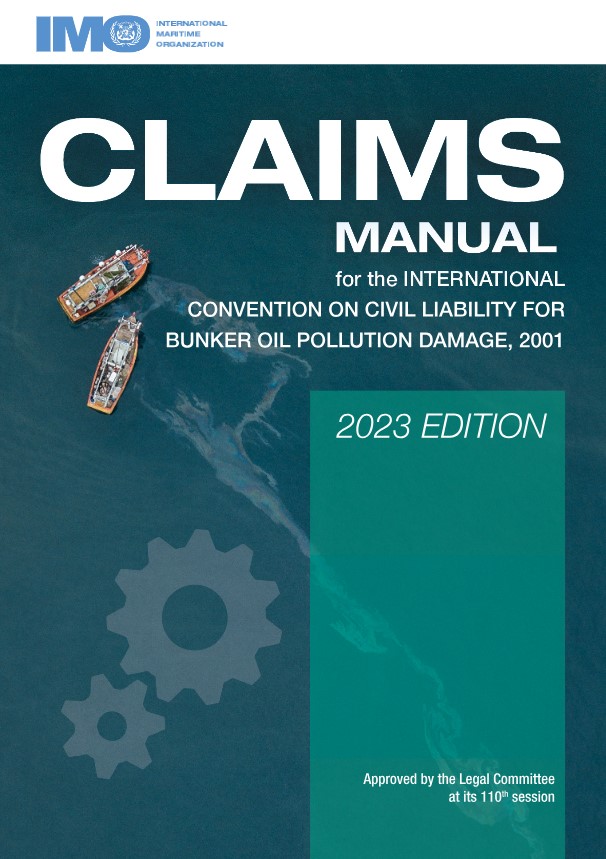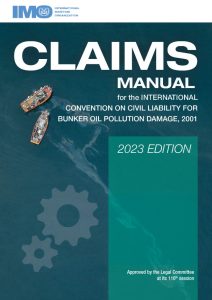Explore the top 7 legal liabilities shipowners face under the Bunkers Convention (2001). Learn how international rules govern bunker oil spills, mandatory insurance, and environmental damage claims.
Why Bunker Oil Liabilities Shouldn’t Be Overlooked
Not all oil spills come from tankers. In fact, the majority of marine oil pollution incidents today involve fuel oil leaks from non-tanker vessels—cargo ships, container vessels, cruise liners, and offshore supply ships. One such incident occurred in 2007, when the Cosco Busan, a container ship, struck the San Francisco–Oakland Bay Bridge and spilled over 200 tonnes of bunker oil into the bay, leading to extensive environmental damage and multi-million-dollar lawsuits.
The International Convention on Civil Liability for Bunker Oil Pollution Damage, 2001, commonly known as the Bunkers Convention, was adopted by the International Maritime Organization (IMO) to close the gap left by the earlier CLC (1969), which only applied to persistent oil spills from tankers.
This article breaks down the Top 7 shipowner liabilities under the Bunkers Convention, helping operators, insurers, legal professionals, and students understand how this vital legal framework protects coastlines—and why compliance is more important than ever in 2025.
Understanding the Bunkers Convention and Its Role
The Bunkers Convention, which came into force globally in 2008, ensures that shipowners of all ship types are held financially accountable for pollution caused by fuel oil leaks or spills.
Key features of the Convention include:
-
Strict liability for shipowners (no need to prove fault).
-
Mandatory insurance requirements for ships over 1,000 gross tons.
-
Direct access to insurers by claimants.
-
Coverage of economic losses, environmental damage, and preventive actions.
The Convention is now enforced in over 90 IMO member states, representing the vast majority of global shipping activity.
1. Strict Liability for Bunker Oil Pollution Damage
Under Article 3 of the Bunkers Convention, the registered shipowner is strictly liable for pollution damage caused by bunker oil from their vessel, whether the oil was spilled during operations or due to an accident.
What this means:
-
Victims do not need to prove negligence.
-
The only valid defences are exceptional cases like natural disasters, acts of war, or intentional sabotage by a third party.
Example:
In the MV Pacific Adventurer case (2009), bunker oil from a cargo ship contaminated miles of Australian coastline. The shipowner paid millions in cleanup and damage claims—even though the incident stemmed from a storm-related cargo loss.
Source – AMSA Pacific Adventurer Case Study
2. Obligation to Carry Valid Bunker Oil Insurance
Every ship over 1,000 gross tons engaged in international trade must carry compulsory insurance or financial security to cover liability for pollution damage.
Key details:
-
The insurance must cover the maximum liability limit under applicable national or international law (often aligned with the 1996 LLMC Protocol).
-
The certificate of insurance must be issued by the flag state and carried onboard.
-
P&I Clubs typically provide coverage for this purpose.
Consequences of non-compliance:
-
Port State Control (PSC) inspections may detain non-compliant ships.
-
Ships may be refused entry or fined in signatory states.
IMO – Guidelines for Bunkers Certificate
3. Mandatory Certificate of Insurance for Port Entry
Article 7 mandates that all qualifying ships must carry a Bunker Certificate onboard, issued by their flag state or a recognized issuing authority.
This certificate:
-
Is valid for one year, aligned with insurance terms.
-
Must be presented during inspections and port calls.
-
Is often posted alongside the ship’s safety and cargo certificates on the bridge or in the Master’s office.
Port state authorities (like USCG, AMSA, or Transport Canada) have the right to verify this certificate before granting access to national ports.
4. Legal Exposure to Third-Party Claims
Under the Bunkers Convention, victims of pollution—including individuals, businesses, governments, and NGOs—have the right to bring direct legal claims against either:
-
The shipowner, or
-
The insurer or guarantor listed in the Bunker Certificate.
Covered claims include:
-
Physical environmental damage (e.g., oiled beaches).
-
Economic losses (e.g., fisheries, tourism).
-
Preventive measures (e.g., cleanup costs, containment).
Real-world scenario:
In the Hebei Spirit incident (2007), bunker fuel spilled from a VLCC after a collision in Korea. Cleanup costs reached over $300 million, and extensive third-party claims were filed under both the CLC and Bunkers Convention.
5. Duty to Notify Authorities and Cooperate During Incidents
Following a pollution event, shipowners have a legal duty to:
-
Notify coastal and flag state authorities immediately.
-
Cooperate fully with clean-up operations, investigations, and claims assessments.
-
Provide documentation, including oil records, voyage logs, and engine room logs.
Failure to comply can result in:
-
Suspension of insurance coverage.
-
Criminal or civil penalties under national pollution response laws.
-
In some cases, denial of liability protection under the Convention.
EMSA – Pollution Response Operations
6. Financial Responsibility for Preventive Measures
The Bunkers Convention recognizes that preventive actions taken before a spill occurs—or during a minor leak to avoid a larger one—are still claimable.
For example:
-
Deploying containment booms.
-
Engaging tug assistance to avoid grounding.
-
Temporary oil transfers from leaking tanks.
These costs must be reasonable and proportionate, but the shipowner is still liable to pay, even if no visible pollution occurred.
Analogy:
Just like installing sprinklers before a fire can reduce damage, preventive oil containment helps minimize legal exposure—even when no damage is “seen.”
7. Liability Is Not Limited by Gross Negligence or Intentional Misconduct
Under Article 6, if a court finds that the pollution damage resulted from the personal act or omission of the shipowner, committed recklessly or with intent, then the right to limit liability is lost.
This is consistent with maritime legal principles found in both the CLC 1969 and the LLMC Protocol 1996.
Implications:
-
The shipowner may be liable for full damages, even beyond the insured limits.
-
Insurers may refuse coverage for reckless or criminal behavior.
-
Corporate entities and individuals (e.g., the Master, operator) may face criminal prosecution.
UNCTAD Legal Framework Summary
–
Real-World Application: MV Wakashio Spill, Mauritius (2020)
The Japanese bulk carrier MV Wakashio grounded off the coast of Mauritius and leaked over 1,000 tonnes of bunker fuel into a protected marine ecosystem. The incident triggered:
-
Massive public outcry.
-
Compensation claims under the Bunkers Convention.
-
Criminal prosecution of the Master and Chief Officer.
-
Government scrutiny over whether the shipowner met all Bunker Convention obligations, including insurance and preventive response.
This case highlighted the increasing expectations on shipowners to manage risks far beyond compliance—especially in ecologically sensitive zones.
FAQ
Q1: Does the Bunkers Convention apply to all ships?
It applies to all seagoing vessels, not just tankers, over 1,000 GT carrying bunker fuel for propulsion. Warships and sovereign vessels are exempt.
Q2: What is the difference between the Bunkers Convention and CLC 1969?
CLC 1969 applies to persistent oil carried as cargo on tankers, while the Bunkers Convention applies to fuel oil used onboard any ship.
Q3: Can port states deny entry to non-compliant ships?
Yes. Ships without a valid bunker certificate or insurance may be detained or refused entry under IMO enforcement protocols.
Q4: Are charterers or cargo owners liable?
Under the Convention, liability is placed solely on the registered owner, not charterers or cargo interests.
Q5: What’s the penalty for failing to report a bunker spill?
Penalties vary by country but may include heavy fines, criminal charges, or detention.
Conclusion
The Bunkers Convention was introduced to close a critical gap in maritime environmental law—and in today’s world of rising environmental expectations and regulatory scrutiny, its importance is only growing.
For shipowners, understanding and complying with the seven core liabilities outlined above is not just about avoiding fines. It’s about demonstrating accountability, maintaining access to global ports, and being part of an industry that takes environmental protection seriously.
As new fuel types like biofuels and methanol enter the market, the scope of legal exposure may evolve—but the core principles of accountability, insurance, and cooperation will remain at the heart of maritime law.
References
-
International Maritime Organization. (n.d.). Bunkers Convention Overview
-
EMSA. (2023). Marine Pollution Response
-
UNCTAD. (2022). Legal Framework on Liability and Compensation
-
Paris MoU. (2023). Port State Control Guidance
-
AMSA. (2022). Oil Pollution Response Reports
-
IOPC Funds. (2023). Case Studies and Compensation Reports
-
Lloyd’s List Intelligence. (2024). Bunker Spill Risk and Compliance Review



A good post for maritime attorneys